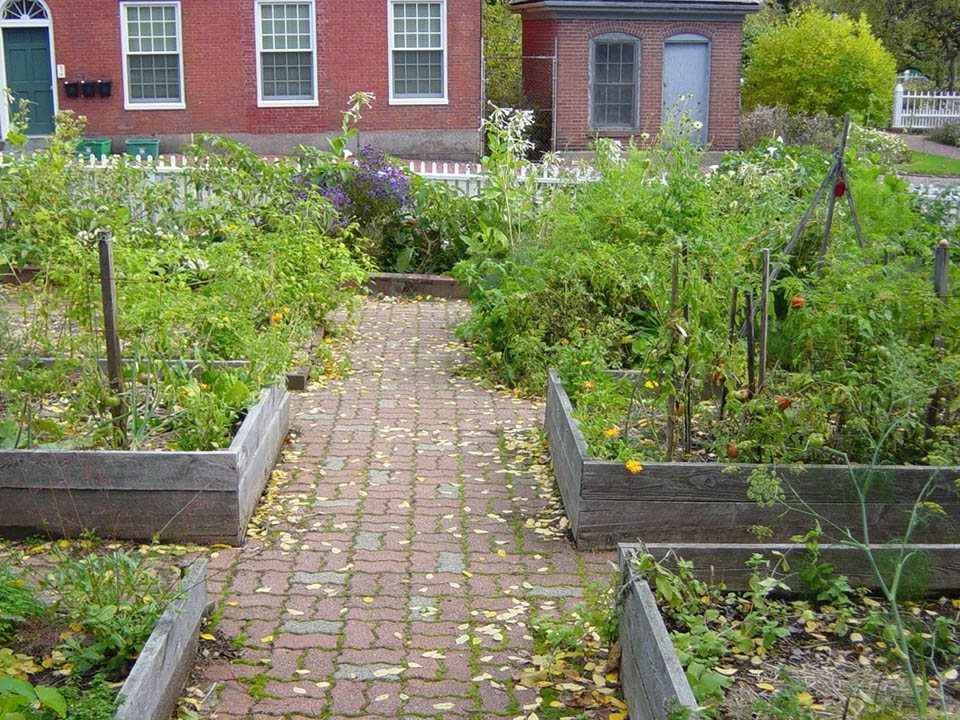As one of the largest green sites in the urban setting of Portsmouth, and as teaching museum hosting 90,000 visitors each year, Strawbery Banke Museum has the potential to have a significant impact in its community. The 10-acre outdoor living history museum is located in historic downtown Portsmouth, NH. It interprets the history of this original neighborhood as it evolved from 1690 to 1955. The museum is currently unveiling a new interpretation plan that will further engage, excite and educate visitors. It includes the museum’s practices and challenges related to environmental sustainability and climate change, which amplifies our work to ensure that the themes and experiences visitors discover here relate to their lives.
The Heritage House Project rehabilitates spaces in the museum’s historic houses to accommodate rental offices and apartments. The rehabilitation work includes energy efficiency strategies like zone dampers, open cell insulation, LED lighting. Computers “sense” outside air conditions and when those conditions are within acceptable set points, the system uses that air to “condition” our houses. The Carter Collections Center, built in 2008, utilizes this system effectively and is an Energy Star qualified building. Looking to the future the museum continues to seek renewable energy sources to supply all electricity usage, and to install newer and better technology to reduce natural gas consumption.
The museum’s eight gardens are a source of inspiration. The staff uses them to demonstrate sustainable and organic gardening methods – and support Strawbery Banke bee hives. The museum’s Horticulture Department maintains a seed-collecting program, sharing seeds with visitors and members of our Community Garden to preserve heirloom plants. The department recently started a new collaborative seed initiative working with the University of New Hampshire to extend the use of our seed library to the public via the Portsmouth Public Library. The mission of the Piscataqua Seed Project (@piscataquaseed) is “To steward regional biodiversity with the sustainable preservation of heirloom crops through community based seed collecting collaborations between partners which support the invaluable mission of enriching local economies and healthy food systems.”
Because the museum’s historic houses have been negatively impacted by sea level rise (http://www.strawberybanke.org/sea-level-rise.cfm), mitigation and adaptation have become an important part of its work. The staff is working with the greater community to address these problems, and is sharing that experience with their visitors. The Museum hosted a Forum with key organizations from around the Seacoast of New Hampshire actively involved with measuring, analyzing, and adapting to the impacts of climate change and sea level rise on the community. Participating organizations, from a public school to multiple city departments, and including a coastal adaptation working group and the University of New Hampshire, among others, will continue to work collaboratively to help prepare the community for a future very different from today.
